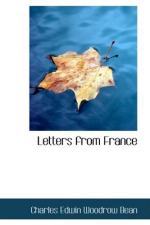The Tenth Legion did get its rest. Caius lay beneath a moss-covered, tilted gravestone—long, long forgotten—not so far from the great road. One of a much later generation of orderly officers, who had scraped part of the inscription clean with his penknife, went back and told the mess at dinner that he had come across the grave of an officer of their own unit, who had died thereabouts in some camp a hundred and fifty years before. He did not mention that, on his stroll, he had scrambled down a steep grass bank which ran curiously across the hill-side. There was green grass above it, and green grass below it; and green grass and patches of ploughland all over the downs. The white frost still hung to the blades, though it was midday. The remnant of a small wood stood from the hill-side. “I must get a fatigue party on to that timber to-morrow,” had said the orderly officer to himself.
And so it was that the forest passed away—the general service wagons from the neighbouring Roman camp called there daily for sixty years for fuel cut by generations of fatigue parties. The only trees left, over miles of sloping downs, were the thickets around the villages and one row of walnut trees growing along the top of that steep grass embankment—the one remnant of Hammerhead’s old orchard. Years later the tow-haired Franks swept through the country. The walnut trees were cut by a farmer for the uprights in his long barn. His children rolled down the old bank in their games, and in bad baby Latin invited the youngsters of the farm next door to charge up “the Grass Bank” while they defended it. The generations, whose bad Latin gradually became French, still spoke of Hammerhead’s old landmark—now situated in a large grass field—as “The Grass Bank.”
On the military maps some way behind the arterial system of red lines which stood for the German trenches—exactly as on a German map it stands for ours—was a shaded mark shaped like an elongated pea pod. There was no name to it—but a note in some pigeonhole of the local Intelligence Officer stated that the inhabitants called the place “The Grass Bank.” Through it the map showed a lonely little red capillary, wandering by itself for a quarter of an inch, and fading off into nothing again. The stout German colonel of the local artillery group—big guns which barked mostly of nights—having found his forward observation post knocked in by a small field-gun shell, had come back and growled like a bear all dinner-time, most inconsequentially, about the lack of cover from heavy shells in the back areas.




